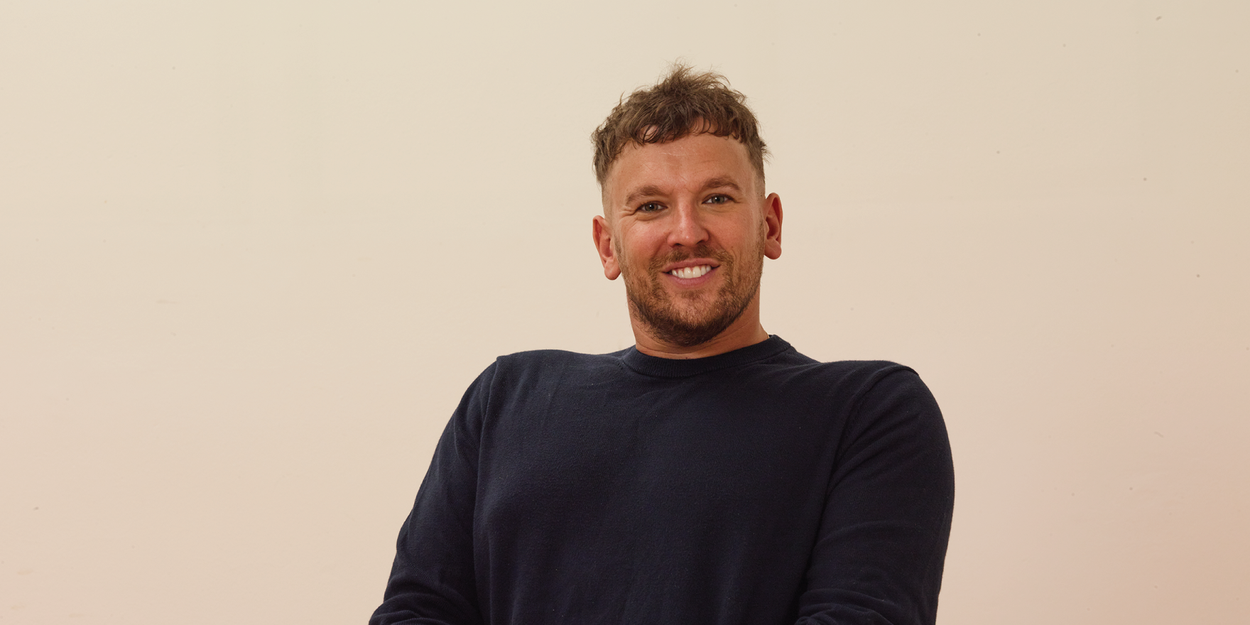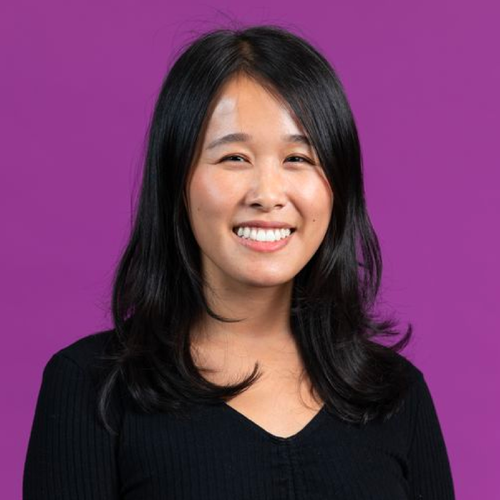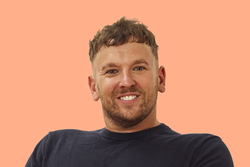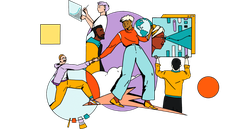
3 lessons on disability inclusion from Dylan Alcott

Written by

Senior Content Marketing Manager, Culture Amp
What does it take to build a truly diverse and inclusive world of work? Dylan Alcott, who will be joining us as keynote speaker at Culture First APAC 2022, has more than just thoughts and ideas – he has personal experience.
As a wheelchair user, Dylan has encountered more than his fair share of prejudice and unconscious biases. In high school, he was bullied and teased for his disability. His first job interview was canceled when he arrived – simply because the company didn’t want to move his interview from upstairs to downstairs.
Today, Dylan is highly recognized as an accomplished athlete, Paralympian, disability activist, and 2022 Australian of the Year. He is admired for his incredible sportsmanship, humility, and passion. His story is heartwarming, and his achievements are inspiring. Yet, he is just one of the one billion people (15% of the world population) living with some form of disability. Unfortunately, Dylan’s high-profile successes are not representative of what the majority of the disability community experiences.
Below, we explore what life is like for people with disabilities in Australia and share three lessons we’ve learned from Dylan Alcott about promoting meaningful disability inclusion.

Build a better and fairer world of work
Learn about disability inclusion from Dylan Alcott, Paralympian and 2022 Australian of the Year.
The state of disability and disability inclusion in Australia
In Australia, about 4.4 million (18%) people live with a disability. “Disability” in this case is a broad categorization based on underlying health conditions, impairments, activity limitations, and participation restrictions.
People with disabilities represent the largest and fastest-growing minority group in the world. Through an intersectional lens, disability cuts across multiple identities including race/ethnicity, gender, socioeconomic status, LGBTQIA* status, and more. As Dylan explains in an interview, “Every one of our diversity streams can and will be affected by disability. Anyone can have a disability.”
Every one of our diversity streams can and will be affected by disability. Anyone can have a disability.
Dylan Alcott
Too often, the needs of people with disabilities are ignored or overlooked as government or organizational policy priorities, despite the size of the disability community and the many systemic barriers they face. According to the Centre of Research Excellence in Disability and Health, despite the Australian government’s good intentions and efforts to improve the state of disability inclusion, “little or no progress had been made in reducing the levels of disadvantage faced by working-age Australians with disability.”
How do people living with disabilities in Australia fare?
According to a 2022 report by the Australian Institute of Health and Welfare, Australian people living with disabilities experience:
- Lower health outcomes. Adults living with disabilities are 6x as likely to rate their health as “poor” or “fair,” compared with 7% of adults without a disability.
- Social isolation. Over 1 in 6 people with disabilities report experiencing social isolation. This number is particularly high for those living with a psychosocial disability.
- Discrimination. 1 in 5 people age 15 and over with disabilities have experienced some form of discrimination (including disability discrimination), compared with 1 in 7 (15%) without disability.
- Financial stress. Working-age people with disabilities are 2x more likely to be in financial stress than those without a disability.
- Lower rates of employment. Only 48% of working-age adults with disabilities have a job, compared with 80% of adults without a disability.
As the data clearly indicates, the disability community in Australia experiences significantly more barriers and inequities than those who are outside of the disability community. That being said, organizations, leaders, and individuals can take meaningful action to close these disparities and create a more diverse, equitable, and inclusive world for all.
3 ways to create more inclusive workplaces for the disability community
Here are three ways that Dylan Alcott believes organizations, leaders, and individuals can help create more diverse, inclusive, and accessible workplaces.
1. Make representation a priority
Dylan strongly believes in the importance of representation in the disability community. Without strong and successful role models, people in the disability community may end up internalizing toxic and self-stigmatizing narratives about their disabilities.
Growing up, most of the representation Dylan saw on TV involved “sob stories” – such as road safety advertisements where after a collision, somebody’s resulting disability was positioned as a tragedy. It was the only narrative he encountered in his early life, and he began to internalize the message that his “life was over.” It wasn’t until he attended his first wheelchair tennis tournament that his perceptions began to change.
"When I first played tennis … I was 11 or 12 … and the craziest bit about that tennis tournament is that I had never seen someone in a wheelchair drive a car. They were all driving," he said in an interview with One Plus One.
The disability community at large deserves different narratives, which is precisely why Dylan argues that it’s important to increase the representation of disabled people everywhere. People with disabilities can be happy. They can be successful, intelligent, and capable. They can have partners, and they can raise a loving family. They belong in boardrooms, parliaments, dating apps, and college campuses. They are capable – and representation is one way to ensure that we can rewrite the reductive, inaccurate, and ableist narrative of disability as tragedy.
Organizations can take action by increasing hiring targets for people with disabilities – including for leadership positions. At the same time, it is pivotal to ensure that there are clear and transparent processes for growth and promotion to eliminate biases that may disadvantage employees with disabilities.
“I think one of the big things is that people with a disability get a job at the front desk, but that’s it,” said Dylan. “They never can progress. We need to have more career options and pathways to inspire young people especially to go to University, and to care.”
2. Cultivate inclusion by eliminating accessibility barriers
“Accessibility when done right makes everybody's life better,” said Dylan in an interview with Property Council of Australia. By focusing on accessibility, institutions and companies can tap into a larger consumer and talent pool – while also creating a better, more inclusive world.
He continued,“It is good business if you are accessible and inclusive. [Approximately] one in four people have a disability, and they can be consumers like everybody else, but if we get left out of the market, we can’t.”
Dylan argues that the best way to create accessibility is through universal design. “[Automatic sliding doors] make your life easier. But they make my life possible. So, when universal design’s done properly, you don't even notice it. But it has to be built from the start,” stated Dylan in a separate interview.
Organizations can incorporate universal design into their buildings, consumer-facing products, company policies, and other practices. For example, leaders can design (or retrofit) their company buildings to have height-accessible service desks, elevators, and door handles that don’t require a grip. Other examples of universal design include providing captioned videos, large print, outlining unspoken company norms in employee handbooks, and ensuring that there is adequate light throughout the office.
3. Address unconscious biases
In an interview with GQ Australia, Dylan said, “For people like me with a disability, the unconscious bias is a lack of expectation of what you can do, negative perception, and negative stigmas around having a disability that you are broken, less capable, un-dateable, and most importantly unemployable, and that you can’t do it as well as an able-bodied person.”
Research has shown that these unconscious biases are not just real but extremely prevalent. One study looking at why employers don’t hire and retain workers with disabilities found: “Many respondents felt that employers believed (or stated that they themselves believed) that a worker with a disability ‘doesn’t pull [their] own weight,’ ‘can’t do the job 100%,’ or ‘might not have the same capacity' as other workers.”
Dylan himself still experiences discrimination stemming from unconscious biases, despite winning three Paralympic gold medals, overseeing two businesses, and running a foundation supporting people with disabilities. In the same interview with GQ, he recounted, “This lady came up to me in tears, and she said, it's so inspirational to see you here getting your own coffee.”
He continued, “What if she was an HR manager recruiting? That’s the unconscious bias, where she feels that getting a coffee is an achievement for me. I’m lucky that I can roll my eyes, have a laugh and move on to winning Wimbledon. I’m very lucky. But what if you didn’t have a job, had no mates, had no one helping you, and you have a disability and you went to 10 job interviews and everyone talked to you like that?”
This is despite the fact that people with disabilities make “bloody good employees,” as Dylan puts it. The Accenture report, “Getting to Equal: The Disability Inclusion Advantage,” found that companies that excel at disability employment and inclusion experience 28% higher revenue, 200% higher net income, 30% higher economic profit margins, and 200% increased likelihood of outperforming their peers in total shareholder returns.
Unconscious biases aren’t just part of the hiring process. They also affect growth, compensation, and an employee’s sense of belonging. Microaggressions can corrode an employee’s sense of self-worth, and the company’s overall state of diversity, equity, and inclusion. Addressing unconscious biases may be difficult, but leaders can start by holding strategic unconscious bias trainings and creating clear and transparent processes that promote equitable development.
Learn more from Dylan Alcott
Creating a diverse, equitable, and inclusive world won’t be easy, but it’s certainly worth doing. “The reason I get out of bed every day is to, even in a very small way, try to change those perceptions [of the disability community] and break those stigmas, so people with disability can live the lives that they deserve to live,” said Dylan.

Build a better & fairer world of work for everyone
Hear Dylan share how companies can create workplaces where employees are empowered to perform at their highest level.



